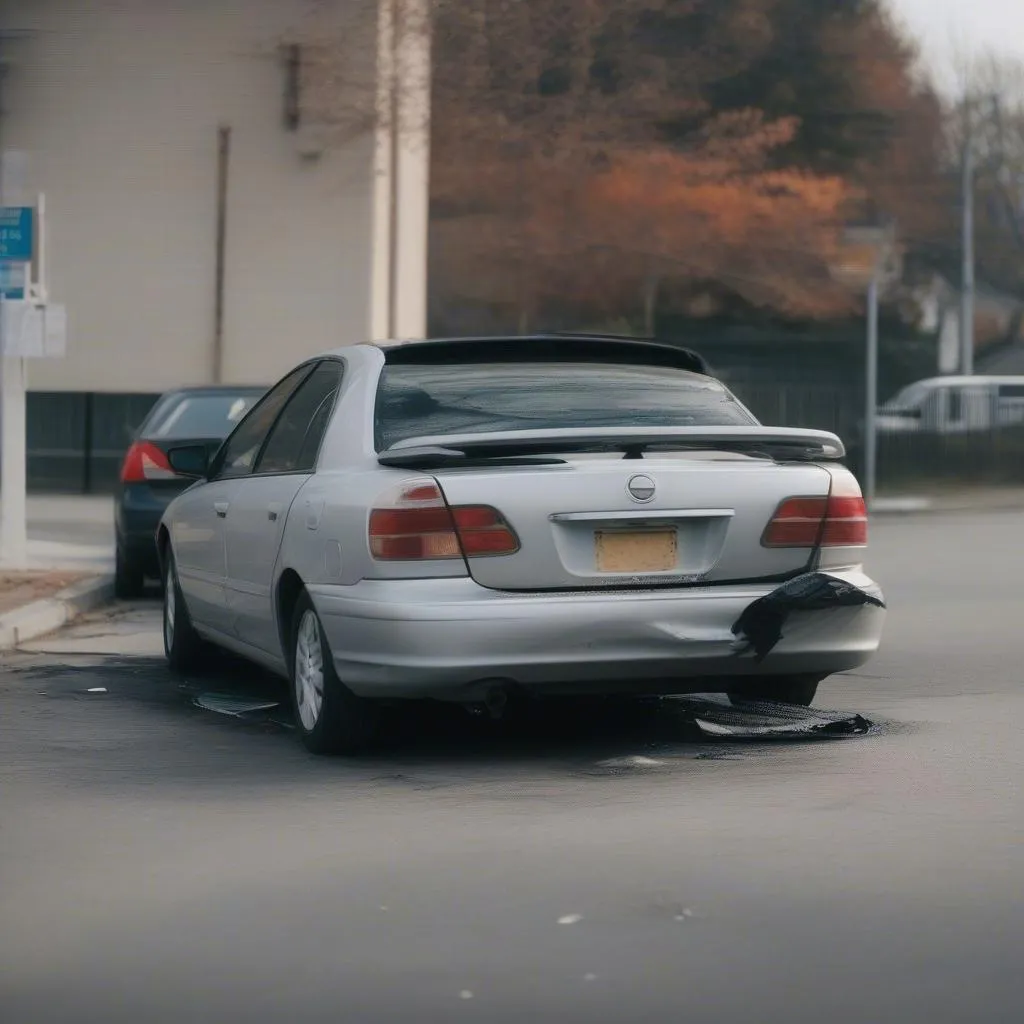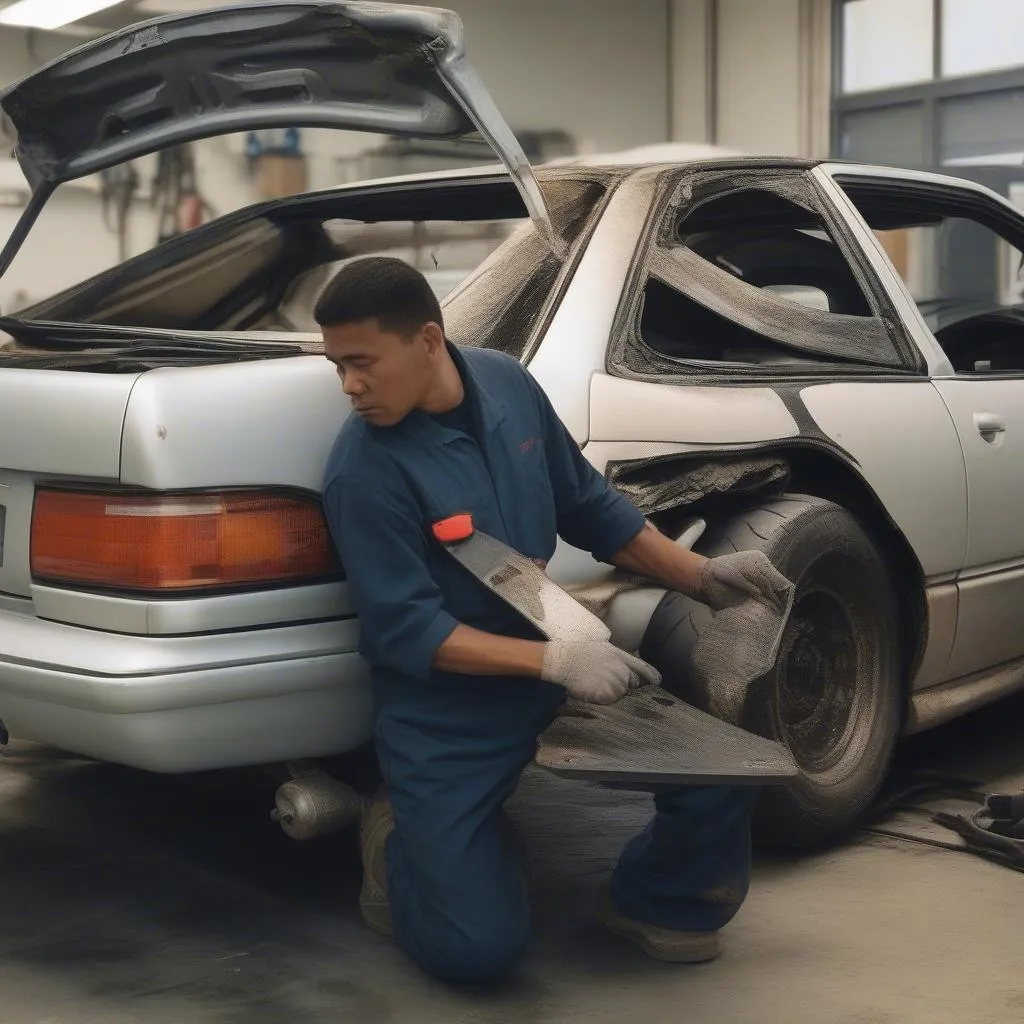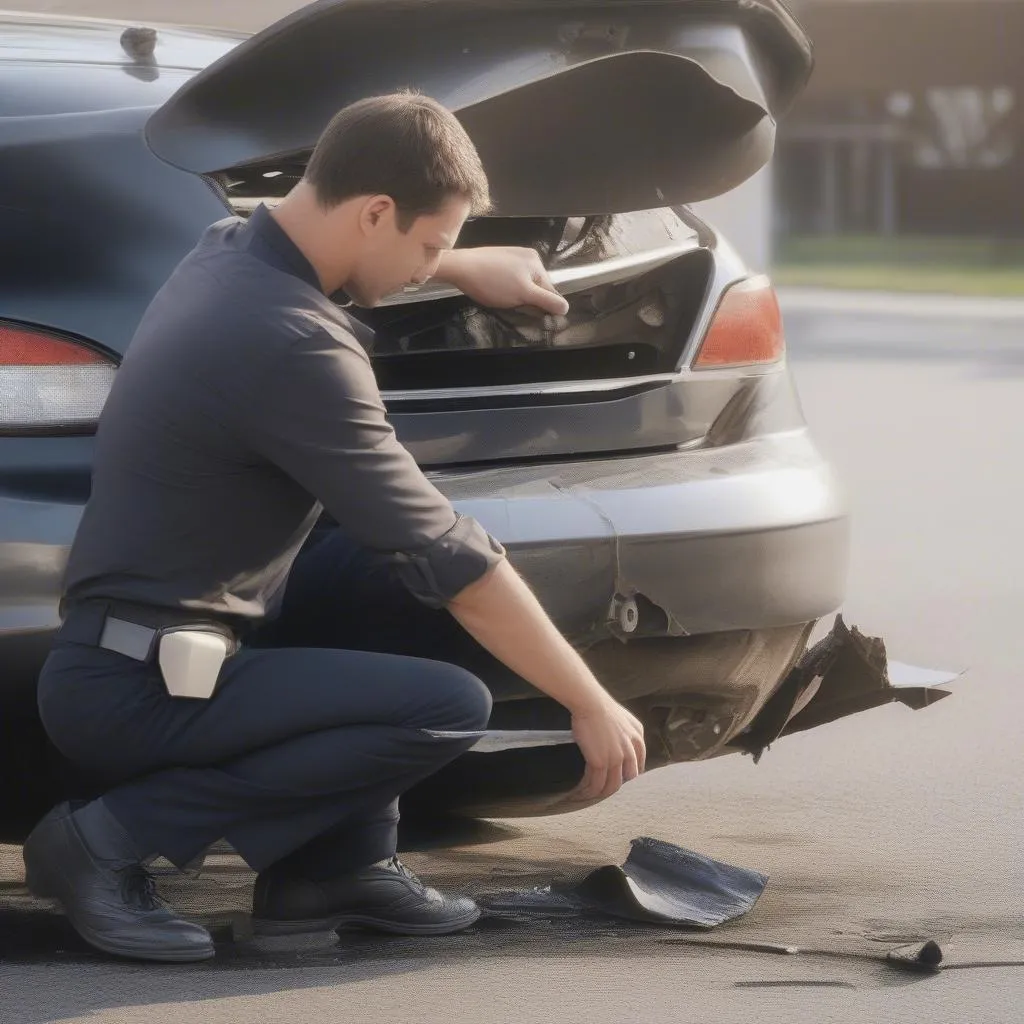Have you ever been in a car accident where your rear bumper took the brunt of the impact? It can be a scary experience, and the damage can be significant. You might be wondering what to do next, how to assess the damage, and how to get your car back in tip-top shape. Let’s dive into the world of rear bumper damage, and what you need to know to navigate this situation effectively.
The Significance of Rear Bumper Damage
Rear bumper damage isn’t just about aesthetics. It’s a critical safety component designed to absorb impact and protect you and your passengers in a collision. Think of it as the first line of defense against serious injuries.
From a technical standpoint, the bumper is designed to crumple and absorb energy from the impact. This crumpling helps to dissipate the force of the collision, reducing the severity of injuries to passengers. The bumper also helps to prevent the car’s structure from being compromised, keeping the passenger compartment intact.
From a financial perspective, rear bumper damage can be costly to repair, especially if it involves structural damage or replacement of parts. In the US, rear bumper repair costs can range from a few hundred dollars for minor scratches to several thousand dollars for significant damage.
From an insurance perspective, rear bumper damage can lead to increased premiums or even a cancellation of your policy. It’s crucial to understand the implications of such damage and how to handle it properly.
Understanding Rear Bumper Damage
Common Types of Damage
Minor Damage:
- Scratches and scuffs.
- Small dents.
- Broken clips or fasteners.
Moderate Damage:
- Bent or broken bumper beams.
- Deep dents.
- Damaged tail lights.
Severe Damage:
- Frame damage.
- Structural damage to the vehicle.
- Damaged trunk lid.
- Airbag deployment.
Determining the Severity
The severity of the damage can be determined by a few factors:
- The force of the impact: A low-speed collision is less likely to cause significant damage than a high-speed collision.
- The type of vehicle involved: A heavy truck will cause more damage than a small car.
- The angle of impact: A head-on collision will cause more damage than a rear-end collision.
What To Do After a Rear Bumper Crash
Step 1: Ensure Safety
- Check for injuries: Prioritize safety! Make sure you and anyone else involved in the accident are okay. If you feel any pain or discomfort, seek medical attention immediately.
- Call emergency services: If the damage is severe or you are unsure of what to do, call emergency services immediately.
Step 2: Document the Incident
- Take pictures: Take photos of the damage to your car and the other vehicle, including any skid marks or debris.
- Exchange information: Exchange contact and insurance information with the other driver.
- Report the accident: Report the accident to your insurance company as soon as possible.
Step 3: Assess the Damage
- Visual inspection: Examine the damage to your rear bumper, including the bumper beam, tail lights, and the trunk lid.
- Professional assessment: It’s a good idea to have a professional mechanic inspect your car to determine the extent of the damage.
How To Repair Rear Bumper Damage
Minor Damage:
- DIY repair: For minor scratches or dents, you may be able to repair them yourself using a DIY kit or a professional repair service.
- Professional repair: For more serious damage, it’s best to take your car to a qualified body shop.
Moderate and Severe Damage:
- Professional repair: Moderate and severe damage will require a professional body shop repair. The shop will need to assess the damage, order any necessary parts, and perform the repair.
- Replacement: In some cases, a replacement bumper may be necessary. This can be done by a qualified body shop.
FAQs
- What are some common reasons for rear bumper damage?
- What are some tips for preventing rear bumper damage?
- How can I tell if my car’s rear bumper is structurally damaged?
- What type of insurance coverage is needed to cover rear bumper damage?
- What are some common mistakes people make when repairing rear bumper damage?
Helpful Tips
- When choosing a repair shop, make sure it is certified and has a good reputation.
- Ask for a written estimate before any repairs are made.
- Take pictures of the damage before and after the repair.
What Next?
To learn more about car maintenance and repair, check out our other resources:
Link to article: https://techcarusa.com/garage-floor-car-stop/
We are here to help you with any questions or concerns you may have. Feel free to contact us via WhatsApp: +84767531508 for professional support and guidance.
Don’t forget to share your own experiences and questions in the comments section below!
 Rear bumper damage after a car accident
Rear bumper damage after a car accident
 Repairing rear bumper damage
Repairing rear bumper damage
 Rear bumper damage insurance claim
Rear bumper damage insurance claim